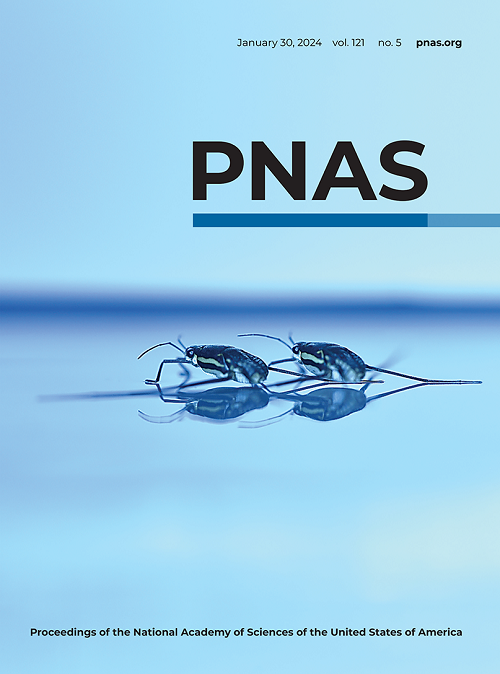Intravital imaging of translocated bacteria via fluorogenic labeling of gut microbiota in situ
IF 9.4
1区 综合性期刊
Q1 MULTIDISCIPLINARY SCIENCES
Proceedings of the National Academy of Sciences of the United States of America
Pub Date : 2025-03-28
DOI:10.1073/pnas.2415845122
引用次数: 0
Abstract
The translocation of bacteria from intestinal tracts into blood vessels and distal organs plays pivotal roles in the pathogenesis of numerous severe diseases. Intravital monitoring of bacterial translocation, however, is not yet feasible, which greatly hinders us from comprehending this spatially and temporally dynamic process. Here we report an in vivo fluorogenic labeling method, which enables in situ imaging of mouse gut microbiota and real-time tracking of the translocated bacteria. By mimicking the peptidoglycan stem peptide in bacteria, a tetrapeptide probe composed of alternating D- and L-amino acids and separately equipped with a fluorophore and a quencher on the N- and C-terminal amino acid, is designed. Because of its resistance to host proteases, it can be directly used in gavage and achieves fluorogenic labeling of the microbiota in the gut via the functioning of the L,D-transpeptidases of the labeled bacteria. Using intravital two-photon microscopy, we then successfully visualize the translocation of gut bacteria into the bloodstream and liver in obesity mouse models. This technique can help further exploration into the spatiotemporal activities of gut microbiota in vivo, and be valuable in investigating the less understood pathogenicity of bacterial translocation in many severe diseases.通过原位肠道微生物群的荧光标记对易位细菌的活体成像
细菌从肠道转移到血管和远端器官在许多严重疾病的发病机制中起着关键作用。然而,细菌易位的生命监测尚不可行,这极大地阻碍了我们理解这一时空动态过程。在这里,我们报告了一种体内荧光标记方法,该方法可以对小鼠肠道微生物群进行原位成像,并实时跟踪易位细菌。通过模拟细菌中的肽聚糖干肽,设计了一种由D-和l -氨基酸交替组成的四肽探针,分别在N端和c端氨基酸上配置荧光团和猝灭剂。由于其对宿主蛋白酶具有抗性,可直接用于灌胃,通过被标记细菌的L、d转肽酶的作用,实现对肠道内微生物群的荧光标记。利用活体双光子显微镜,我们成功地观察了肥胖小鼠模型中肠道细菌在血液和肝脏中的易位。该技术有助于进一步探索体内肠道微生物群的时空活动,并对研究许多严重疾病中尚不清楚的细菌易位致病性有价值。
本文章由计算机程序翻译,如有差异,请以英文原文为准。
求助全文
约1分钟内获得全文
求助全文
来源期刊
CiteScore
19.00
自引率
0.90%
发文量
3575
审稿时长
2.5 months
期刊介绍:
The Proceedings of the National Academy of Sciences (PNAS), a peer-reviewed journal of the National Academy of Sciences (NAS), serves as an authoritative source for high-impact, original research across the biological, physical, and social sciences. With a global scope, the journal welcomes submissions from researchers worldwide, making it an inclusive platform for advancing scientific knowledge.

 求助内容:
求助内容: 应助结果提醒方式:
应助结果提醒方式:


